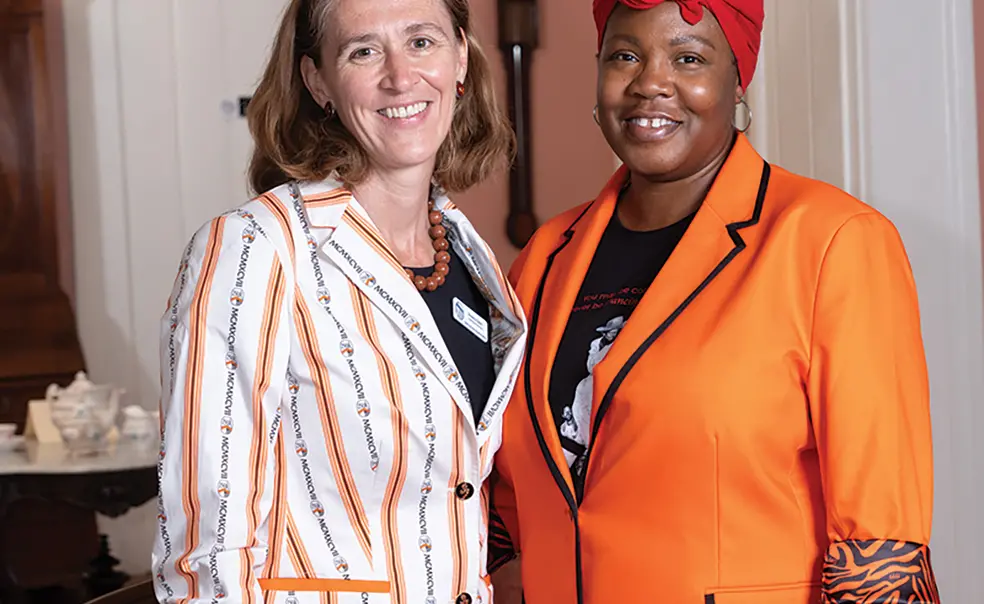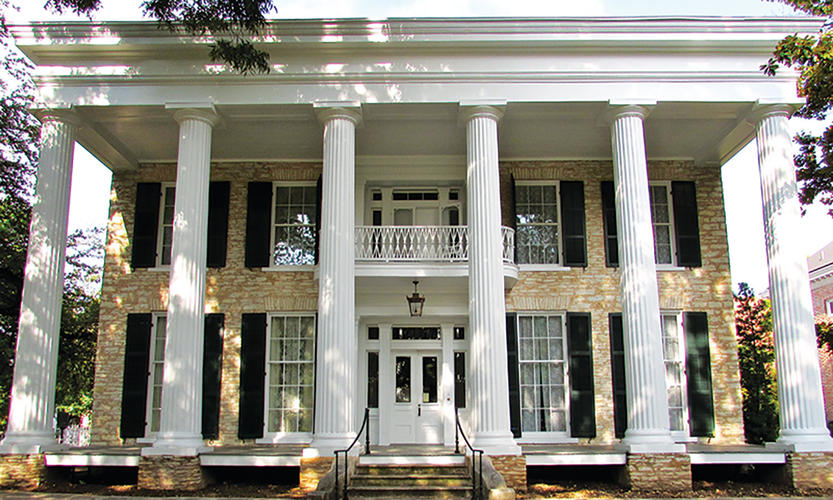Two Alumni Uncover Austin’s Legacy of Slavery
Rowena Houghton Dasch ’97 and Tara Dudley ’99 collaborated on the project
In Austin, Texas, hidden among frat houses and other school buildings, stood one nondescript Greek revival style house that blended in, overlooked, despite it being more than 150 years old. That was until two Princeton alumni worked to uncover the history of its halls and give it a voice. The Neill-Cochran House, now a museum, gives life to the city’s history of slavery. The home was named after its first two occupants, Andrew and Jennie Neill, who were followed by Judge Thomas Cochran and his wife, Elizabeth. Little was known about how the home was used before those owners.
Austin is shy about slavery, despite its reputation for being a progressive city in the last state to receive notification of the Emancipation Proclamation. The Neill-Cochran House Museum is a reckoning with the city’s past. Not only does it bring slavery back into focus, but also it has the only known intact slave quarters left in Austin.
Uncovering its history has not been easy. It is situated right by the University of Texas’ west campus, which meant that people were walking and driving by, clueless to the structure’s history. When Rowena Houghton Dasch ’97, the museum’s executive director for the last 10 years, first took interest in the house, attempting to get a full picture of its legacy resulted in nothing but dead ends. What she did know was that the house was completed in 1856, five years before the Civil War broke out. Her intuition led to the arduous process of piecing together the house’s purpose. “I was pretty frustrated because even though I have done some work in Black studies, that’s not my field. I knew that I needed to be working with somebody for whom that was their primary field,” says Houghton Dasch.
Through Princeton’s alumni network, she found Tara Dudley ’99, a fellow art historian, and until they spoke, she swore they’d met. “It’s really funny that our origin story ended up being complete fiction because, in my mind, I ran into her at a party and chatted with her about the house.” When she reached out, Dudley was working with a historic preservation company.
The two knew of each other and connected when Houghton Dasch had a “light bulb moment,” Dudley says: That although the building had been referred to as a dependency for many years, it was in fact a slave quarters dwelling.
After Houghton Dasch reached out, Dudley and the students in her African American Experiences and Architecture class at the University of Texas at Austin got to work. According to Dudley, “We were able to gather all of this information just about how the site fit into the history of Austin, and then we started to try to look at how the slave quarters building changed over time. We also researched people that might have inhabited that building or worked in that building or on the property.”
They were able to unlock information that helped to shape the house’s history. “Tara has done an amazing job with the occupancy timeline and identifying people who were connected to the property,” says Houghton Dasch. “For instance, just two weeks before the [museum’s reopening event], she was able to get in contact with the granddaughter and the son of the last people who we believe lived in that structure.”
The most surprising discovery, Dudley says, is that the slave quarters on the premises is likely one of many in the state. It’s impossible to confirm, as others are likely unrecognizable or serve different functions. “We know there are buildings on private property or that look like houses; they don’t look like slave quarters buildings anymore.”
Once Tara’s students started working, they were confident enough to call the house slave quarters. According to Houghton Dasch, “That was a big moment. So even though the space was not what we knew it could be from a restoration standpoint, at least we were changing the terminology and helping people to understand how the building was originally used.”
To help the museum reach its full potential, rehab was needed. The furnishings inside didn’t match the time period, and it lacked functional elements, such as a kitchen, closets, or a bathroom.
Even though the team uncovered the building’s history, they encountered hurdles, mainly with funding. Houghton Dasch recalls, “Waiting for the funding to come through in order to actually do the restoration was frustrating. By 2020 we were ready.” Being historically accurate would cost money. The museum has received quite a bit of local support, including grants, which allowed it to restore the house to its 1850s decor.
Prior to completing the renovations, the museum held events to engage community members and keep them interested and informed. Houghton Dasch says, “We started bringing in art exhibits and opening our space up to be more of a community space. We were trying to build visibility for the museum.”
She believes the collaboration is the true embodiment of the Princeton experience — an opportunity to grow and develop lasting meaningful relationships. She says, “So many people did not pick up the phone for me, but a fellow alum did.”
For the Record
An earlier version of this story misstated when slavery was abolished nationwide. As a member of the Confederacy, Texas was the last state to receive notification of the Emancipation Proclamation, which was issued in 1863. The 13th Amendment was ratified nearly three years later.














2 Responses
Norman Ravitch *62
1 Year AgoQuestioning the Point of Revisiting the Past
I fail to see what is so revelatory about Austin, Texas, as a state with slavery as long as it could be allowed to last. The existence of slavery was found all over the U.S.A., north and south. Many people benefitted from it as long as it could exist, as long as the South could prevail. Others did not approve of it out of many different motives. Dredging up the past of our country, which had many unenviable features, seems to me to be pointless, except for political agitators who would use it for their own needs.
Clark Irwin *78
1 Year AgoClarification on Abolition
This interesting article refers to Austin, Texas, as a city “in the last state where enslaved people became free.” Unfortunately, this is incorrect. Even during the Civil War, slavery was still legal in four non-seceding border states: Delaware, Maryland, Kentucky, and Missouri. Maryland and Missouri abolished slavery during the war, but it remained legal under the state laws of Delaware and Kentucky, and presumably some people retained their slave status there.
It was not until U.S. Secretary of State William H. Seward formally declared on December 18, 1865 — after the end of the Civil War and almost exactly six months after the June 19 “Juneteenth” announcement by Union troops entering Texas — that the required three-quarters of states had ratified the 13th Amendment to the U.S. Constitution that abolished slavery.
Editor’s note: The story has been updated to clarify that Texas, as a member of the Confederacy, was the last state to receive notification of the Emancipation Proclamation.